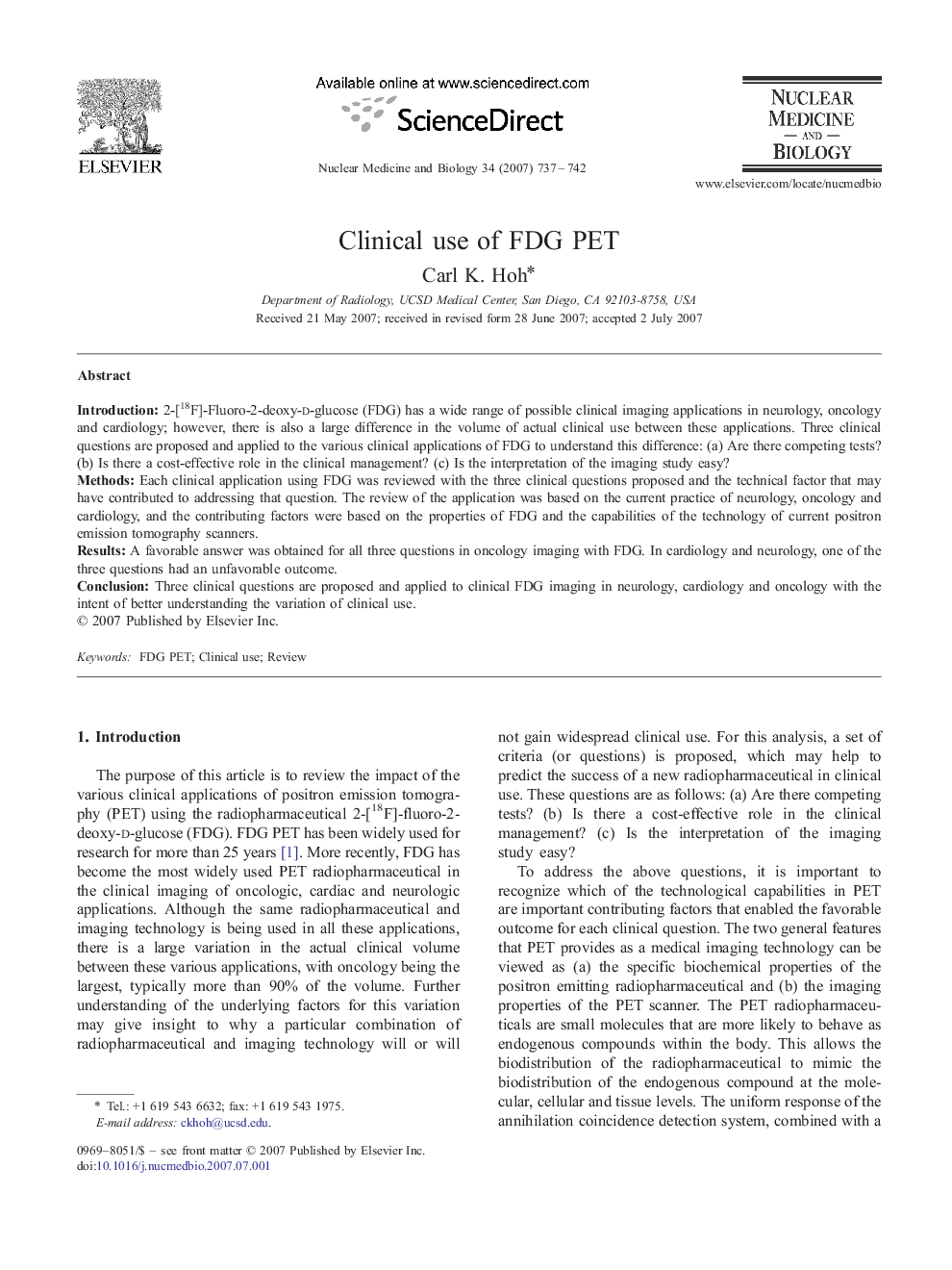| Article ID | Journal | Published Year | Pages | File Type |
|---|---|---|---|---|
| 2154587 | Nuclear Medicine and Biology | 2007 | 6 Pages |
Introduction2-[18F]-Fluoro-2-deoxy-d-glucose (FDG) has a wide range of possible clinical imaging applications in neurology, oncology and cardiology; however, there is also a large difference in the volume of actual clinical use between these applications. Three clinical questions are proposed and applied to the various clinical applications of FDG to understand this difference: (a) Are there competing tests? (b) Is there a cost-effective role in the clinical management? (c) Is the interpretation of the imaging study easy?MethodsEach clinical application using FDG was reviewed with the three clinical questions proposed and the technical factor that may have contributed to addressing that question. The review of the application was based on the current practice of neurology, oncology and cardiology, and the contributing factors were based on the properties of FDG and the capabilities of the technology of current positron emission tomography scanners.ResultsA favorable answer was obtained for all three questions in oncology imaging with FDG. In cardiology and neurology, one of the three questions had an unfavorable outcome.ConclusionThree clinical questions are proposed and applied to clinical FDG imaging in neurology, cardiology and oncology with the intent of better understanding the variation of clinical use.
